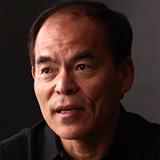
Shuji Nakamura, University of California, Santa Barbara
Developments of Nonpolar/Semipolar Edge Emitting Laser Diodes and VCSELs
Shuji Nakamura obtained his BE (1977), MS (1979) and PhD (1994) degrees in electrical engineering from the University of Tokushima. He joined Nichia Chemical Industries Ltd in 1979. In 1988, he spent a year at the University of Florida as a visiting research associate. In 1989, he began his research of blue LEDs using group-III nitride materials. In 1993 and 1995 he developed the first group-III nitride-based high-brightness blue/green LEDs. He also developed the first group-III nitride-based violet laser diodes (LDs) in 1995. Since 2000, Nakamura has been a professor of materials and electrical and computer engineering (ECE) departments at the University of California, Santa Barbara. He is the Research Co-Director of the Solid State Lighting & Energy Electronics Center and the Cree Chair in Solid State Lighting & Displays. Nakamura had received numerous awards for his work, including the Nishina Memorial Prize (1996), the MRS Medal (1997), the Institute of Electrical and Electronics Engineers Jack A. Morton Award, the British Rank Prize (1998), the Benjamin Franklin Medal in Physics (2002), the Millennium Technology Prize (2006), the Czochralski Award (2007), the Prince of Asturias Award for Technical Scientific Research (2008) and The Harvey Prize (2009). He was elected as a Fellow of the U.S. National Academy of Engineering in 2003. He is the 2014 Nobel Laureate in Physics for the invention of efficient blue light-emitting diodes, which has enabled bright and energy-saving white light sources. He was inducted into the National Inventors Hall of Fame in 2015. He received the 2015 Charles Stark Draper Prize for Engineering and the 2015 Global Energy Prize in Russia.